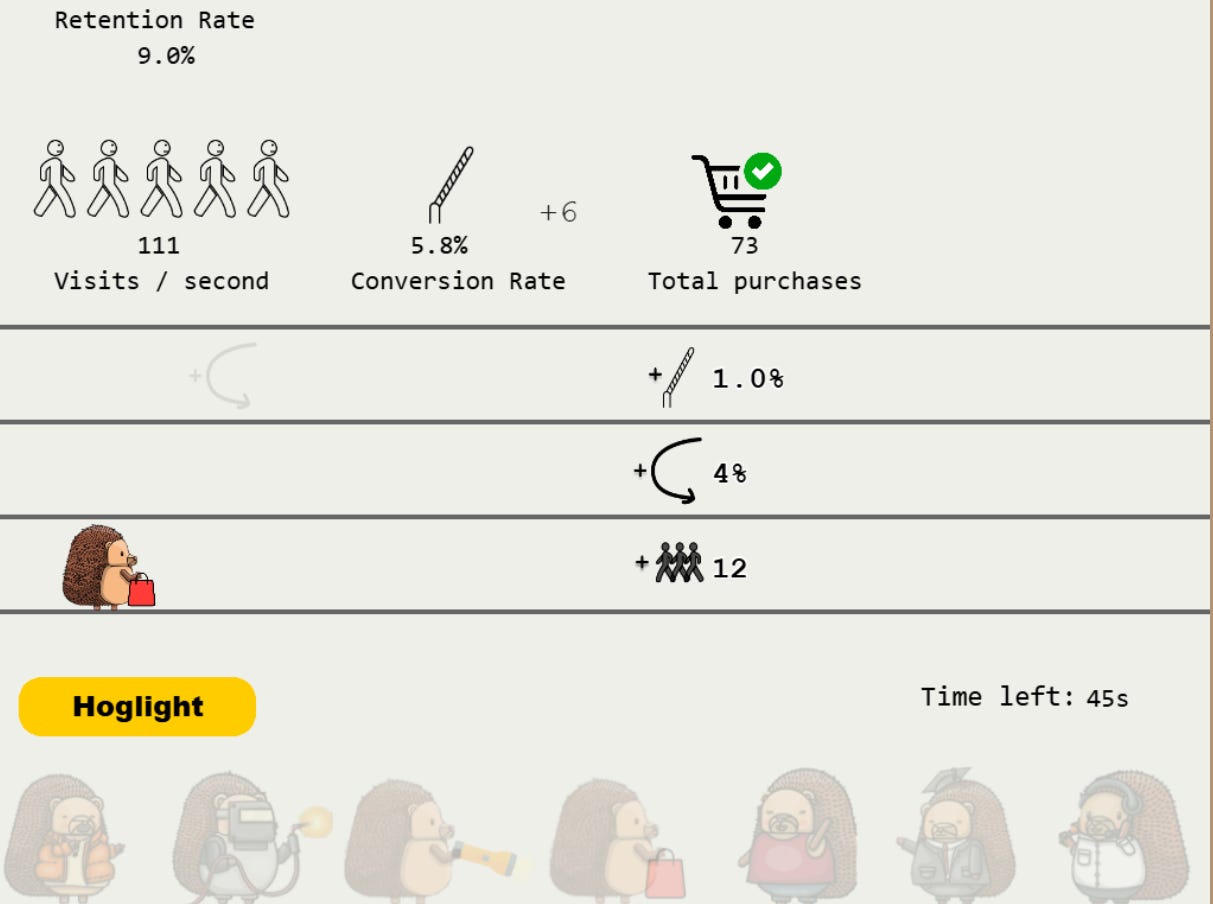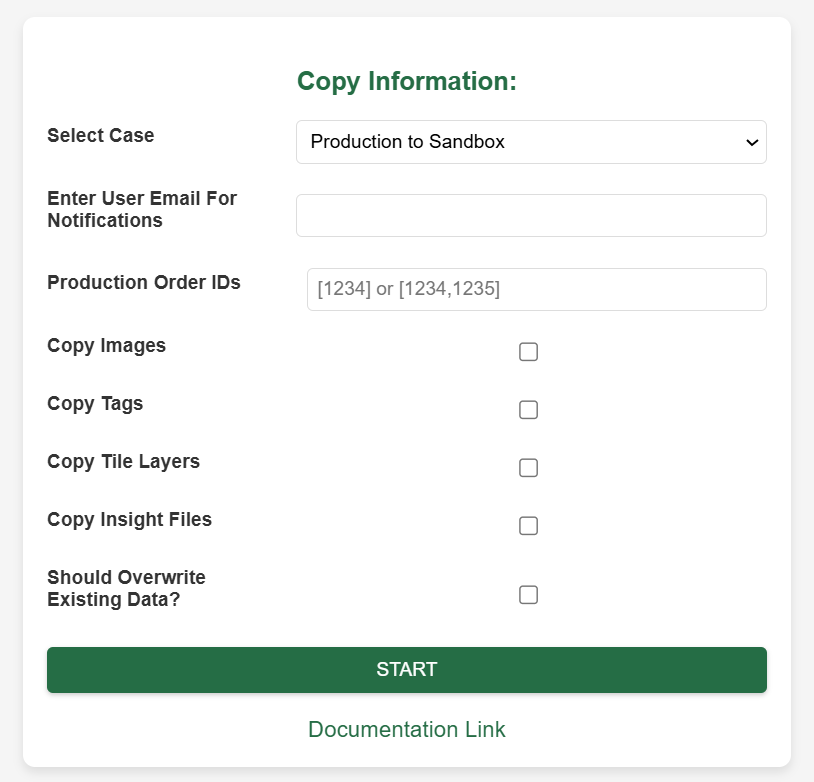10 simple internal tools any EM can build in under 2 hours
Had enough of Cursor code-thrashing?
Unblocked’s new MCP server helps your AI-powered IDE’s skip the trial and error by providing the missing context from your team’s Github, Slack, Jira, Confluence and more.
Thanks Unblocked for sponsoring today’s article!
AI tools might be the best thing that’s happened to engineering managers since the birth of code reviews.
For the first time, we can actually get back to building - even if all we have is 2–3 hours between meetings.
And I really believe this: the days of the “non-building EM” are over. With how easy it is now, there’s no excuse not to build something. (Yes, even a quick Lovable app counts. A little 🙃).
So in today’s article, I’ll share 10 simple ideas you can create in a couple of hours, to:
Solve a pain for your engineers
Help your company
Or learn something new
Here we go:
Demo-data preparator
Hackathon organizer
A viral game
Kudos board
On-call rotation helper
A support agent
A better retrospective tool
Release notes generator
Random coffee matcher
The non-stop talker interrupter
For each idea, I’ll share which tool I feel is best suited to it, among:
n8n (automation)
Base44 - all-in-one apps. Fastest to build with, fewest errors, best UI.
Lovable - Apps you can extend later. Much more control for you.
Cursor/Claude Code - full control of the codebase. For those unfamiliar, Cursor is a fork of VSCode, and Claude Code is a CLI tool by Antrophic (highly recommend this article by Jenny Ouyang to start with it).
Disclosure: only the Base44 link is an affiliate link. I’ve built a couple of apps there and really like the platform.
1. Demo-data preparator
In many companies, the production data and the QA/demo data are quite different. Most often there is some process to sync prod to QA, but especially if there are files/images/videos (and not just DB data) involved, it can become quite complex.
One of my team members raised in a retrospective how awful the process of copying data from production to QA buckets was. There was a Jenkins job, but it could only copy data in huge chunks (think by company and not by user) and could take a few hours.
So I created a simple UI and wrote some Python backend to automate the process. Now we can just input the specific criteria for the copy, and they receive an email once it is done (through a SendGrid integration we already have).
In a similar way, you can create a tool that helps your CS/sales team easily create sophisticated demo scenarios for specific customer calls.
Best tool: Cursor/Claude Code. You’ll probably have to touch sensitive parts of your company’s environment, I wouldn’t easily trust external apps.
2. Hackathon Organizer
Organizing a Hackathon can be quite a chore, especailly if it has an original concept (like a Cleanathon).
You need to:
Choose the concept
Choose how to divide into teams (and sometimes help people choose teams)
Choose the prizes
Find the write timing
Help people find ideas (and approve/decline ideas)
Organize the schedule to be fun but without too many distractions (including snacks, meals, and some bonuses)
And finally - organize the presentations and the voting for the winner
I led quite a few in my career, and every time it was a mess.
If you want to get some credit in your org - volunteer the next time the topic of a Hackathon arrives, and build a simple tool to stream this process for the next time. You can shuffle to create teams, automatically suggest ideas based on the concept, have the option to upload demos and vote on them, and many other simple features.
Here’s a nice guide you can start with.
Best tool: Base44. That’s a classic vibe-coded app, super simple. Actually it can also be a great open source one, or even a SaaS tool - I haven’t seen something good in that area.
3. A Viral game
After reading Tom Orbach’s The Mini-Game Marketing Playbook, I fell in love with mini-games.
In my previous role, I was a Director of Engineering at an Agriculture-Technology company. We flew drones over fields, took high resolution photos, and provided farmers with insights into the problems in the field.
Near the end of the time there, I created a simple game in Phaser (HTML5 games), where you could walk through a field and try to find the problems, and you had the option to ‘buy’ our service, which was like a cheat. The point was to show our service can help you maximize your ROI :)
Some people from the commercial side liked it, but left before I could get any traction with it.
A few months back, I wanted to do a project with Posthog, a great product analytics app. So I created a ‘Hoglight Blitz’ game:

I believe games have a lot of potential to create some cool PR for your company (as you can read in Tom’s article mentioned above), but are mainly super fun to build.
I’m currently working on my spare time on two completely stupid and fun games: carfaces (guess the car model based on the rear lights) and devchemy (like little alchemy but with dev elements). Still WIP :)
Best tool: The 2 latest games I’ve built with Base44. If it’s something you build for your company though, I would recommend Cursor/Claude.
4. Kudos board
In How to WOW your engineers without budget an EM from Flipkart shared some great tricks for making your team feel seen with super small things.
The 2 ideas I like the most are:
A very warm welcome to new members (with a personalized poster).
A personalized ‘promotion timeline’ graph when sharing an engineer’s promotion.
So why not combine all the ‘good’ communication into a simple web app?
It can also be a place where teammates can post public thanks, integrated into Slack.
Yes, I know those features are available in most HR software, but be honest - how often have you seen it done well and actually put a smile on the face of people?
When you do something like that yourself, you can focus on what will work in your specific culture, and integrate it into your day-to-day much more smoothly.
Best tool: Base44.
5. On-call rotation helper
In my previous company, organizing the on-call was a mess. We used PagerDuty, but still somehow we ended up using a monthly spreadsheet, where people put themselves into shifts, and I manually created Google Calendar reminders 😅
With the tools we have now, I would have solved it quite differently:
Have people put their constraints in the Calendar (when they CAN’T be on call).
Create a simple tool that integrates with everyone’s Calendar, reads the constraints, distributes the shifts, and sends calendar invites to everyone.
Create a nice dashboard that shows the current on call, the next, and maybe some fun stats (who’s the most ‘unlucky’ one with most incidents, who’s done the most shifts, and so on).
Best tool: n8n. It’ll deal with the integrations for you (Slack, Google Calendar, Gmail). It can write the data to Supabase, and you can create a dashboard either yourself or with Lovable.
6. A support agent
This one is the hardest to build (and will take more than a couple of hours), but it will probably be the most interesting and useful for your company.
I’m not talking here about a simple agent that reads the docs and answers questions - but one that can act. In almost every org, even the highest tier of support has repeated problems they need to handle. Corrupted data, resetting statuses, things like that.
Usually, there is a pretty specific set of steps to diagnose the cases, and specific steps to fix them.
One of my friends built a ‘support agent’ for his company, which integrates into Jira. It listens to webhooks, acts on proper statuses, diagnoses the problem, and fixes it if appropriate.
Such a thing will be super specific to your company’s flow, but I promise you, you’ll learn a lot from that! You can start by doing it just for one task, and then slowly enhancing it.
Best tool: Cursor/Claude Code.
7. A better retrospective tool
Your team is probably sick of the repeated retros. Same format, same results.
There are many tools out there, but paying for something that simple feels weird now - and you can easily build something suited to your exact needs.
It can:
Choose a random format for each retro based on the best practices
Track all the action items and send reminders
Find common themes
And so on.
8. Release notes generator
A tool that reads merged PRs and Jira tickets and outputs release notes in your standards (maybe even in Slack). Simple and fun to build.
Best tool: Lovble, or even Cursor/Claude Code. Depends on where you need the data from.
9. Random coffee matcher
In my previous company, we had a ‘copilot’ initiative. People could sign up and share what areas of the company they would like to know better (like sales, marketing, engineering, product, and so on). Then, the engineer who led the program would manually match people, and schedule for them a couple of meetings where they’ll ‘shadow’ each other during work.
I participated in this program (and learned a lot about the Customer Success team), but it didn’t last long.
You can now easily build something that does it automatically for you, based on the specific needs of the company.
10. The non-stop talker interrupter
If you are curious to play with voice APIs, this might be fun for you :)
A simple app that you open during a meeting, and it shows who’s talking and how long. You can add a distinct beep if someone goes into a long monologue if your team is on board with it :)
(Yeah, tools like Fathom have this - still, doing it yourself can let you customize it to your needs).
Best tool: Cursor/Claude Code.
Discover weekly
Match The Pipes by Kent Beck. On effective management and responsiblity.
The Red Queen Effect - Mental Model: Work Smarter, Not Faster by Michał Poczwardowski.
Your Engineering Estimates Are Setting You Up To Fail by Gilad Naor.




Thanks for sharing these ideas!
As for expressing gratitude and praising people's achievements (with the help of AI, not apps):
- In the early days of ChatGPT, I used to prepare short, funny poems or humorous kudos. Now they might be a bit cliché, but they can work for some people.
- You can also create songs or superhero images. But be sure their photos are used appropriately.
These ideas are awesome, especially the demo data generator. Thanks for sharing these and the shout-out, Anton!